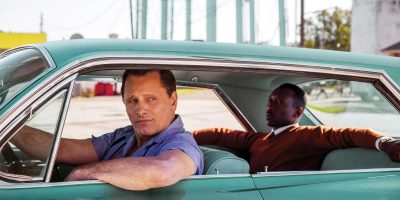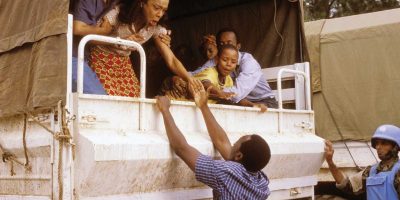
Wendy Cohen
President of Picture Motion
Independent film is anything but independent. If your goal in making your film is to drive meaningful and memorable change, you’re going to need a lot of help and strong partnerships.
Lion box office
“Lion.” Box Office Mojo, IMDb. com, Inc.,
Lion
Five-year-old Saroo gets lost on a train which takes him thousands of miles across India, away from home and family. Saroo must learn to survive alone in Kolkata, before ultimately being adopted by an Australian couple. Twenty years later, armed with only a handful of memories and a revolutionary technology known as Google Earth, he sets out to find his lost family and return to his first home.
Middle of Nowhere’s social impact
Middle of Nowhere’s social impact campaign linked audiences with ways to petition for an end to predatory prison phone rates. Participant’s social impact campaign site features an online petition co-sponsored by the Center for Media Justice, to Federal Communications Commission Chairman Genachowski urging passage of the Wright Petition CC Docket No. 96–128 to regulate the cost of phone calls from prisons and establish benchmark rates no higher than $0.25 per minute for collect calls.
“’Middle Of Nowhere’ Social Action to Link Audiences With Ways to Urge an End to Predatory Prison Phone Rates.” Participant Media, Oct. 2012,
Middle of Nowhere awards
“Middle of Nowhere (2012): Awards.” IMDb, 2019,
You have to find productive and rewarding ways to get the film in front of the community you want to impact. And that’s where we come in.
Picture Motion, and companies like us, are known as impact consultants or producers — but I like to think of us as bridge-builders. If you imagine a Venn diagram of the film world and the nonprofit, community-organizing world, we sit right in the middle. We make sure a film has the largest possible audience and makes the greatest possible impact.
We start every project by asking all of the stakeholders — the filmmakers, the distributors, the partners, the producers — what their impact goals are. Usually, a filmmaker has a sense of the change they want to see happen, whether it is legislation change, behavior change, or changing (sometimes even opening) hearts and minds. At this stage it’s also essential to be honest about the campaign’s budget and the time we have together, so we can be honest about what we can do. Money isn’t always the key to making an impact, but you have to be realistic about the team it takes to bring your ideas to life. Perhaps most important is creating a film, a story, that is high-quality, engaging, and well-told. If the community you’re hoping to engage loves your movie, you will likely have a successful campaign.
Once we have clear goals from the stakeholders, we dive in and learn everything about the issue at hand at this moment in time. We think of ourselves as the experts at finding the experts. We’ll make phone calls to the nonprofits, activists, professors — and we do a lot of listening. Who is already working on this issue? Where can the film make the most impact? Who are the people who might think differently if they experience this film? Those phone calls and meetings are the most important part of our job.
This is where we become the bridge-builders, because now we understand the goals and intentions of both sides. We never just ask a partner to promote a film and sell tickets for us; we make sure that we are helping them meet their goals as well. How can the film support their strategy? Can they be involved in the press around the movie? Can they be speakers at events? Can their current initiatives help us answer the question about what audiences can do after they see the film? Partnerships only work when they are mutually beneficial.
Where there was once a fear of associating a film with an impact campaign, now people are starting to see that it’s an opportunity, not a liability. We’re getting press outside the review pages — stories about communities using films to create change. It’s helping the bottom line at a time when breaking through has never been more difficult. In today’s world, your project is competing not just with every film and TV series ever made, but with everything on the internet as well. Through this model of “Impact Distribution,” we can demonstrate very specifically that we’re bringing audiences directly to your film and driving greater change.
Audiences really are eager to do things much more meaningful than just clicking “like” on Facebook. We know this is true for millennials and Gen Zers in particular. We focus on leaving the audience with something powerful they can do the moment the movie ends.
Lion is a great example of this. The producers came to us very early in their process and asked, “How can this film make a difference in the lives of children who go missing in India?” We created a landscape report by researching and engaged grassroots organizations working on the ground in India and learned what they most need are funds. One of the things we did was put a card at the end of the movie before the credits that said, “Over 80,000 children go missing in India each year. You can help children — just like Saroo — by supporting extraordinary organizations working directly with children in India. Here’s how: www.lionmovie.com”
We raised over $650,000 in donations from audiences who saw the film in theaters and on Netflix alone. That money is going to three grassroots organizations in India to help make railway stations safer for children — because that’s where so many go missing. These funds supported 24-hour staffed help desks looking out for missing children, and a new office for India’s dedicated hotline for missing kids, with additional volunteers and workers available to answer any calls.
See-Saw Films
See-Saw Films partnered with The Charity Network to launch #LionHeart, which provided financial support to the 11M+ children who live on the streets of India. The many nonprofit organizations that #LionHeart supported included Railway Children, a charity that works with kids living on the streets and railway stations to prevent them from being exploited or abused.
Lang, Brent. “‘Lion’ Launches Social Impact Campaign to Help Children in India (EXCLUSIVE).” Variety, 22 Nov. 2016,
https://variety.com/2016/film/news/lion-heart-campaign-india-1201924715/
When I think of some of the projects I’m most proud to have be involved with, I always think of Ava DuVernay’s Middle of Nowhere, which I worked on during my tenure at Participant Media. This beautiful narrative film is about a resilient woman whose life is turned upside down when her husband is incarcerated. Through the course of my research, I discovered the Campaign for Prison Phone Justice — conceived by Malkia Cyril’s Center for Media Justice — which was already in motion trying to end predatory fees on prison phone calls. In many cases, these fees were forcing families to choose between speaking to their loved ones and purchasing essentials like buying groceries.
So, instead of creating our own social impact campaign, we joined forces with the Phone Justice initiative already underway. We arranged for Ava to speak at private screenings for commissioners at the Federal Communications Commission (FCC), and we joined the Center for Media Justice at Capitol Hill to use the film to galvanize politicians into taking action around the issue. Ultimately, this combined pressure led to the FCC capping phone rates and fees. It was a perfect example of how a film can play a specific role in accelerating change.
It’s important to remember that change doesn’t happen in isolation. And this is why we believe the earlier you can share your film and form these partnerships, the better. You might have a clear vision for the impact you want to have, but more often than not, it’s only with the support of the right partners that you’ll be able to achieve it.






















































